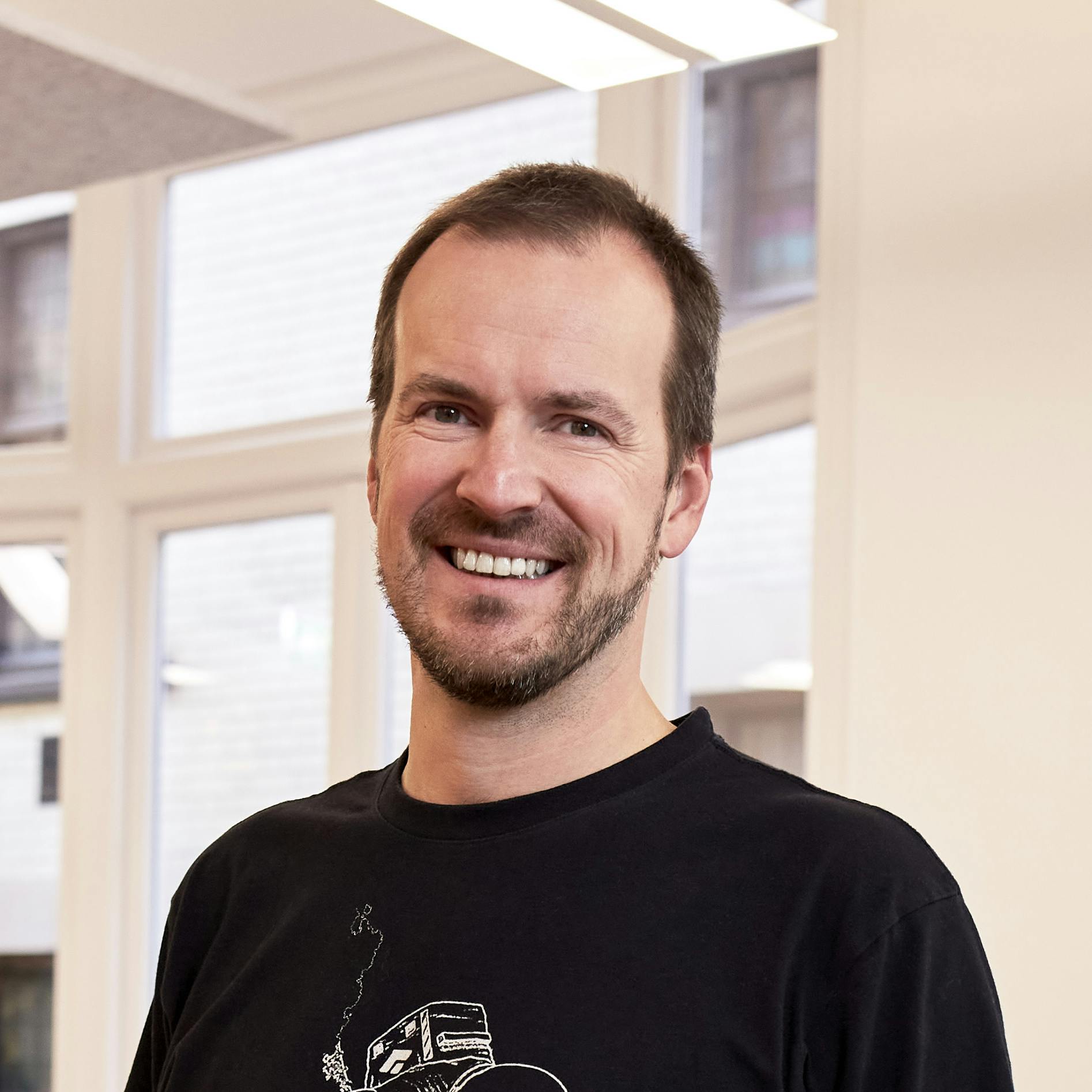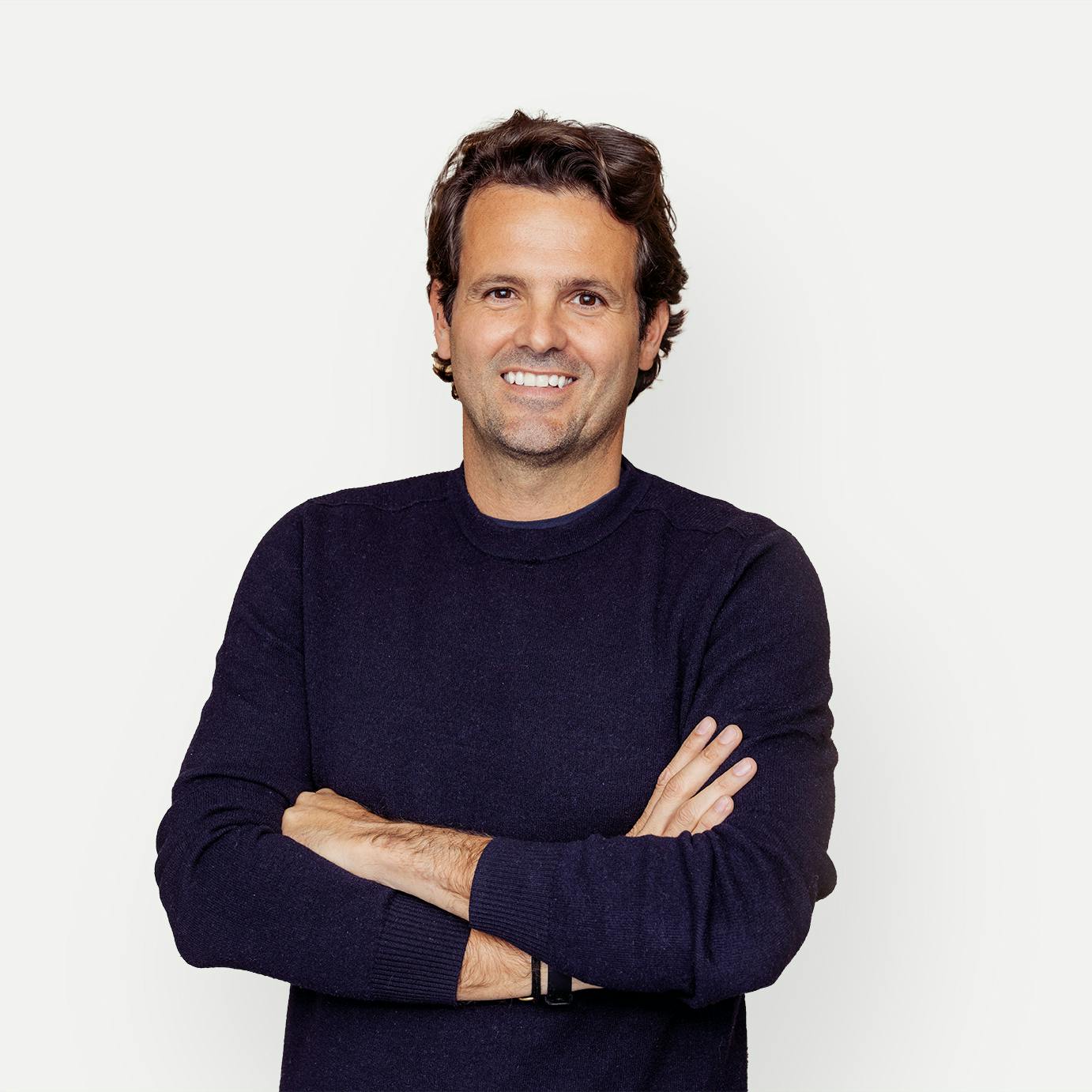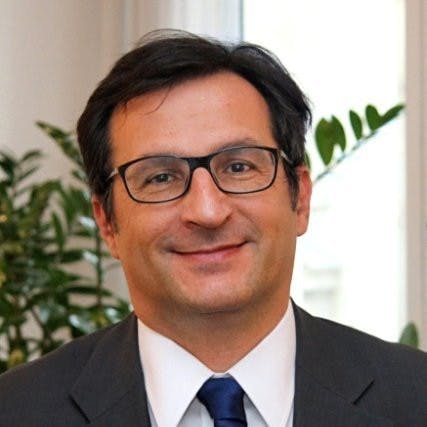Empty dropdown
Notes:Data is as of September 2024. Based on all survey respondents who answered optional free text question. Respondents' responses were mapped to all applicable themes. Numbers do not add up to 100%.
24 min read
How are Europe’s companies tracking when it comes to investment? This chapter explores the flow of capital into the continent’s startups, from how companies are performing at different stages and in different regions, to which founders are most likely to achieve $1B+ outcomes.
Share
Ten years ago, we published the first State of European Tech report. It was a brief snapshot of the ecosystem — just 40 pages long — produced as a one-off to celebrate Europe’s vibrant potential at a time when most attention was focused on the US. It became an annual event as we charted the progress of the ecosystem. Today, the State of European Tech report is the most in-depth analysis of the continent’s tech journey.
A lot has changed since then. Over the decade, Europe’s ability to attract and grow talent, unlock capital and raise its ambition level has been transformed. In particular, in this chapter we explore the investment trends and dynamics as Europe has scaled its capital invested by a magnitude of 10 over as many years. Europe is well and truly on the map, with investors from all over looking for opportunities here, and competition heating up again despite the headline number for capital invested projected to be flat year on year.
Today, Europe boasts an impressive 35,000 early-stage companies, up from 7,800 in 2015. The virtuous flywheel that leads to success breeding more success is firmly in motion. Founders are reinvesting their know-how and capital in Europe after exiting their businesses, and tech employees are going on to grow their very own $B+ businesses. This has led to a whole new generation of firms setting up with greater ambitions for European tech, and their contribution to building out its ecosystem will be vital in the next decade.
Still, diversity remains a challenge with only a fraction of funding going to women today. Very little has changed across the board, with all-women teams still attracting less funding at every stage. At Pre-Seed, diverse teams seem to be at last attracting a bigger share of funding, but the progress has been slow.
We asked respondents to share their views on the most important positive change they have seen in European technology over the last decade. Almost 50% shared their thoughts, which were then grouped into themes using large language models. Across all respondents, capital invested is the most cited area of positive change, with many referencing different factors such as access to capital becoming more evenly distributed, the presence of US investors in Europe, or a more diverse investor base overall (including angels, accelerators and government initiatives alongside VCs).
Some changes are harder to quantify, but 25% see progress in the maturity of the ecosystem, its evolution and increased ambition. "Overall, there's been a shift where the brightest minds are choosing not to pursue careers in large corporations, but to become entrepreneurs," says one of our respondents. Another adds: "I know more talented people running their own businesses than trying their luck in the Fortune 500."
More cross-border collaboration between European markets was also highlighted, as was the growth of the talent pool, and the emergence of innovative sectors that will drive Europe forward, such as deep tech and sustainability.
The take-home message is made clear by another survey respondent: “We are part of the global conversation now.”

Respondents in the survey include founders, VCs, and LPs, offering diverse perspectives across the ecosystem.
Investors, including VCs and LPs, primarily noted significant shifts in the investment landscape (41% and 38% respectively), pointing to the transformative changes they've observed. Founders, on the other hand, most often highlighted the increasing maturity of the ecosystem (28%), noting the emergence of successful role models that have created a clearer, more navigable path to success and raised ambition. One founder put it simply: "There are more European hubs and more founders in these hubs that are building companies with big global ambitions."
This also speaks to the growth of the talent pool, which 27% of LPs highlight as an important positive change. Founders are able to tap into a strong community and support networks where they are based, and LPs mention that experienced founders are sharing insights and mentoring the next generation of entrepreneurs. They also note improvements in the VC talent base, with "more sophistication in the financial ecosystem" and "more knowledgeable and experienced VC investors".


What we frequently lack is early-stage momentum. The main culprit here is fragmentation. Our founders fundraise in isolated national silos – less than 18% of all early-stage investments are pan-European. Meanwhile, their main competitors in the US fundraise coast-to-coast. We need a pan-European entity standard to simplify investing in Europe and unify our startup ecosystems to finally compete globally as one."
Andreas Klinger
Investor at Prototype Capital, Co-initiator EU-Inc
Investment into European tech has levelled up significantly over the past decade. This year, investment levels are on track to reach around $45B — three times as much as the $15B recorded in 2015.
The VC-backed ecosystem is currently in the process of stabilising after two outlier years. Investment levels peaked at an unprecedented $101B in 2021 — up 170% year-on-year. As the broader macro environment shifted, capital invested has since reverted back to levels in line with the long-term growth trajectory of the ecosystem. While this year’s projected $45B is slightly lower than 2023’s $47B, it’s likely to align more closely with the coming quarters as more investments are announced retrospectively.
It is also 20% higher than the level of investment seen in 2020, suggesting the market as a whole has reached a new equilibrium, despite a few turbulent years.

Taking a 20-year horizon illustrates how much the ecosystem has grown. In Europe, the total funding over the past 10 years is 10 times higher than that of the previous decade, having grown from $43B to $426B. By comparison, the US grew 2.8 times over the same period, from $249B to $1.2T.


"Building start-ups is incredibly hard. Even today, the conventional wisdom is that you have a very small chance of being very successful. Most start-ups are designed to fail, and I don't think this has changed much in the past decade.
Taavet Hinrikus
Co-Founder, Wise, Founding Partner, Plural
Funding levels may have fallen since the highs of 2021 and 2022, but if we zoom out to look at the last decade, it is Europe that has seen more growth than any other region. The continent's 10-year compounded annual growth rate (CAGR) is 13%, faster than anywhere else in the world. The US — still the leader in absolute VC funding — has seen a 10-year CAGR of 8%, compared to 2% for China and 10% for the rest of the world. At this rate of growth, it would take some time for Europe to reach the $139B level of funding seen in the US this year. Were Europe to continue on the same 13% CAGR, this milestone would be reached some time in a decade in 2034.
On a year over year basis Europe falls behind other regions. The difference to the US is particularly stark, where funding levels experienced relatively strong growth and are on track to add 16% this year compared to last. The continued climb in the US is largely driven by the outsized rounds, with the share of $250M+ rounds accounting for 44% of this year's funding. To put this into perspective, during the 2021 and 2022 peaks years these accounted for 21% to 34% of total funding only.

| Europe | United States | China | RoW | |
|---|---|---|---|---|
| 2015 to 2024 CAGR (%) | 13% | 8% | 2% | 10% |
| 2024 versus 2020 change (%) | 20% | 21% | 22% | -2% |
| 2024 versus 2023 change (%) | -5% | 16% | 1% | -1% |
| 2024 capital invested ($B) | $45B | $139B | $49B | $42B |
The scale of investment into Europe’s tech ecosystem has grown consistently over the past decade, but once we normalise for GDP to adjust for the relative size of each country, it highlights which governments are putting tech high on the agenda. It is worth nothing that the measure is not constant in time, and looking at just this year's data would paint a different picture to the last ten year's average due to the 2021 and 2022 peak fundraising years pushing the average up.
Estonia takes the world’s top spot by the relative scale of investment in tech, with VC funding accounting for 1.17% of GDP over the past decade. Singapore and Israel take second and third place, respectively. The US ranks fourth, with local tech companies raising the equivalent of 0.53% of GDP since 2015.
While 17 of the 30 top countries in this list are from Europe, it also highlights the room for growth in many of Europe’s larger ecosystems. Notable large European countries missing from the top 30 are Spain and Italy, which are ranked 34th and 60th, respectively, behind a number of developing countries.

The US invested 0.53% of its GDP in technology over the last decade — while this is not to say this level of investment is a gold standard, it serves as a useful benchmark to highlight the scope for growth in most European countries.
Sweden and the UK are close with 0.52% and 0.48% of GDP respectively, reflecting their strong position as innovation and technology hubs within Europe. Surprisingly, some larger economies, such as Germany and France, lag behind on this measure, despite higher absolute levels of VC funding. Malta and Cyprus also stand out — their high positions in the ranking are likely to be influenced by their favourable tax and regulatory environments, which attract companies to set up there.
The gap widens from there, with Eastern European countries (such as Poland and Romania) and Southern European countries (like Portugal and Italy) at the other end of the spectrum, each with less than 0.10% of GDP. This ranking reflects the continent’s own regional disparities, and active effort will be needed for these regions to close the gap with leading tech hubs in Europe and beyond.
For tech to have captured 0.5% (in line with US levels) or even 1.0% of Europe’s GDP as Estonia has achieved, historic funding levels would need to have been 2.5x and 5.0x higher, respectively. In absolute terms, this equates to an additional $620B or $1.7T of capital to be invested in European tech respectively over the last decade.


Access to capital, especially local funding options including both earlier stage funds and growth funds, is essential for startup success. At the moment, the Spanish ecosystem primarily offers access to earlier stage funds, and scaling a Spanish startup into a unicorn often requires turning to international investors. Ideally, we’d see more local growth funds in the ecosystem to enable those €50-100M companies to reach that €1B threshold without needing to go abroad. Supportive policies can go a long way, like tax reliefs for investments into Spanish growth companies, as it is clear that our country has a lot to contribute in the tech space and we've already seen the ripple effect of big Spanish companies in the ecosystem."
Juan Urdiales
Co-founder and co-CEO, Job&Talent
To be successful, an ecosystem relies on three key pillars: talent, capital, and ambition. The last one is more difficult to quantify, but $B+ companies are an expression of the ambition of founders to build tech champions at local, regional and global levels as their companies scale in size and impact. Since 2015, all three pillars have been transformed across many countries across the continent. Once rare, $B+ companies are now a feature of almost every European economy. In fact, 11 ecosystems that were yet to produce a $B+ success story by the end of 2015 now boast one or more.
While gains have been made across the board, the biggest leaps forward have taken place in the UK, Germany and France. These countries have gone from accumulating low double-digit or even single-digit funding levels in the decade leading up to 2014 to attracting a combined $250B over the past 10 years — the UK even nears the $150B mark. The tech headcount in these countries has also grown by 6-8x (in line with the wider 7x increase seen across Europe), with the total count of employees hired by UK-based tech companies approaching a notable 1M employees. Across European countries, an average of 72% of tech employees work in the same country as their company’s headquarters; the rest are based elsewhere in the region, contributing to the growth of other ecosystems through job creation and knowledge transfer.
The growth trajectory of these countries illustrates the power of the flywheel effect: Europe’s first $B+ companies came from the UK, Germany, France and Sweden, paving the way for more funding, talent and billion-dollar companies to thrive.

The last ten years have seen a fivefold increase in the number of European tech companies that are at $B+ valuations. By early 2015, 72 European tech companies had reached this milestone, while in the years after, this number had reached 358. These companies span 30 European countries and 127 unique cities.
358
The year-on-year decline in funding levels is evident across Europe. Despite this, the top three countries have maintained their positions, with the UK continuing to lead the way with tech companies on track to raising over $13.1B in 2024. France and Germany follow with $7.5B and $6.7B raised respectively.
However, there has been movement further down the list. The Netherlands has seen the biggest absolute funding increase, attracting $2.5B in 2024 compared to $1.8B in 2023, moving up to fourth place. It overtakes Switzerland and Sweden, the latter of which has dropped from fourth to sixth place. The Nordic country has one of the largest year-on-year decreases in funding, from $5.2B to $2B.

The UK may have consistently attracted the largest share of funding in Europe over the past decade — but as the overall pie expands, other nations are taking a growing share of total capital invested. In the decade from 2015 to 2024, 21 European countries invested more than $1B in total. In the previous decade, just seven countries achieved this.
What's more is that the rate at which some of these countries are investing is growing at a much faster pace than the European average CAGR of 13%. Smaller European economies in particular are catching up, with the likes of Croatia and Czechia seeing an average growth rate of 75% and 42% year-on-year, respectively.
France is one of the top three countries in terms of capital invested, and its growth stands out. It recorded a CAGR of 16.3% over the period, more than 3 percentage points above the European average and more than 6 percentage points above Germany. The Netherlands is also on a positive trajectory, with a growth rate of almost 20%.


"Many stars have aligned over the French VC landscape over the last five years. We have a vibrant GP and start-up ecosystem, LPs willing to consider venture as a compelling asset class (if only by virtue of diversification), public policies in favour of innovation and technology, and, finally, a very good chemistry between all stakeholders.
Philippe Tibi
Professor of economics, Ecole Polytechnique
The San Francisco Bay Area has long been synonymous with tech, consistently topping rankings of cities by amount of funding raised. But several European cities are cementing their status as globally leading tech hubs.
Back in 2015, London was the only European city in the list of top 10 hubs by funding raised for early-stage startups (rounds under $15M). Fast forward to 2024, and London has risen to second place globally, with Berlin and Paris also joining it in the top 10.
For later-stage rounds ($15M+), London has moved up two places, while Paris has replaced Berlin in the top 10. The increasing presence of European cities in the rankings reflects the scale of VC funding in the region today, as well as the fact that Europe is now producing many local champions that are also global leaders.
While Asian hubs dominated both rankings in 2015, their presence in the early-stage category has declined significantly over time. Chinese cities in particular have fallen. It tells a cautionary tale on how an adverse political and regulatory environment can quickly impact its entrepreneurial ecosystem.

| Ranking | 2015: Less than $15M | 2024: Less than $15M | 2015: $15M+ | 2024: $15M+ |
|---|---|---|---|---|
| 1 | San Francisco Bay Area | San Francisco Bay Area | San Francisco Bay Area | San Francisco Bay Area |
| 2 | New York City | London | Beijing | New York City |
| 3 | London | New York City | Hangzhou | Beijing |
| 4 | Beijing | Singapore | Shanghai | London |
| 5 | Boston | Shenzhen | New York City | Hangzhou |
| 6 | Shanghai | Seoul | London | Shanghai |
| 7 | Shenzhen | Bangalore | New Delhi | Shenzhen |
| 8 | Tokyo | Berlin | Berlin | Paris |
| 9 | Austin | Tokyo | Shenzhen | Hefei |
| 10 | Hangzhou | Paris | Suzhou | Mumbai |
Tech hubs in London, Berlin, Paris, Stockholm and Munich are not only established but continuing to get stronger, with funding levels increasing by at least 10-fold when comparing this decade to the previous one.
London holds the top spot by a wide margin, with its startups raising more than $100B in funding between 2015 and 2024, compared to the $42B raised by startups in Berlin, which takes the next place.
But European companies no longer need to be based in just these major hubs to thrive. The diversity of the top 20 ranking is remarkable, spanning 14 unique countries and including many non-primary cities.
While primary cities such as London, Amsterdam and Stockholm continue to attract 60%+ of the country's venture capital, the expansion in total investment levels means that non-primary cities are now also reaching scale. These are home to $B+ companies, such as CMR Surgical in Cambridge or 1KOMMA5° in Hamburg. As tech becomes even more ubiquitous over the next decade, we expect to see many more hubs emerge across Europe, given its rich canvas of business and academic centres spread around the continent.

While funding activity has shown little change year-on-year, founder sentiment provides a valuable leading indicator for what to expect in 2025.
In the second half of 2022 (when the survey was run) and 2023, 80% of founders told us it was harder to raise capital than before. This was a stark contrast to responses we received in 2021, when just one in five founders told us they were finding the market more difficult compared to the year before.
The tide seems to have turned with sentiment improving this year, although most still describe the environment as challenging. In 2024, 60% of respondents told us it is harder to raise external finance now than it was a year ago. In addition, some founders are finding the environment harder than others. The share of respondents who find the funding environment harder is higher among women, and particularly so for non-white women (70%).
Encouragingly, though, 20% of respondents tell us they have actually found it easier this year — a significant increase from just 7% of founders who described the market this way in 2023.

The number of investments taking place across Europe has risen over the past decade, maintaining a positive trajectory overall.
It’s the increase in growth stage, though, that is most revealing about the transformation Europe’s tech ecosystem has undergone over the past decade. These rounds have been increasing in number at a faster rate, with those raising $15M or above having more than tripled since 2015.
The number of earlier stage rounds has gradually been increasing, with 2023 representing nearly a 40% increase from 2015. While the most recent numbers for 2024 are trending down year-on-year, they are also most impacted by the reporting lag — where round announcements are often significantly delayed by six months to a year. Once the reporting lag catches up, it is likely we are looking at a flat trend year-on-year.


"The opportunity set at the growth stage has expanded considerably over the past decade. As early stage funding has continued to meet and drive the rate of company creation and innovation at the early stage higher, so too has an ever higher number of European startups reached scale at pace. We now have more ambitious founders scaling innovation than ever before, not just in the major hubs, but across Europe from Copenhagen and Barcelona to Sofia. However, European growth funds are still sub-scale relative to US and global competitors.
Laura Connell
Partner, Atomico
Another leading indicator of market activity is perceived competition intensity, which appears to be heating up once again.
When asked about the competitiveness of investment opportunities in 2024, the majority of investors at each Seed, early and growth stages told us competition has increased over the last 12 months. This recent change in sentiment suggests investment activity is picking up again.

This year has been the biggest year for debt financing in Europe on record. Due to the changes in interest rate environments, the relative cost of fundraising has also gone up, making debt an even more attractive prospect for those startup founders who don't want to give up equity.
With $4.7B raised in just the first three quarters of 2024, this equates to the highest share of VC funding raised, equivalent to 14%. Keeping in mind these numbers only reflect the share of debt financing that gets disclosed, as some banks, debt funds or government led funding organisations do not make their debt transactions public, the reported totals are only the tip of the iceberg.


"European entrepreneurs have demonstrated they have the talent, innovation and ambition to succeed on the global stage. However, all too often these scale-ups have limited choices other than to source overseas capital to build full stack companies at scale. Our investment infrastructure in Europe must develop to deliver long-term capital, values aligned capital at scale. The momentum to unlock Europe private assets through pensions and insurers is key to connecting capital to opportunity. This will ensure entrepreneurs can access the type of capital they need and members can reap the rewards of Europe's invested strengths to gain exposure to and shape industries of the future.
Stephen Lowery
Head of Investor Coverage & Business Development, HSBC Innovation Banking UK
Comparing the median size of today's funding rounds with those of a decade ago, Europe's ecosystem has levelled up across the board.
Seed-stage investments in Europe are now almost five times the size than in 2015, up from a median size of $300K to $1.4M. Series C rounds, although based on a smaller sample in Europe than in the US, have also grown in size. Today, the median Series C round comes in at $55M compared to $18M in 2015.
Yet, Seed rounds in particular are becoming even larger in the US, with the median now more than double the value of those in Europe. While the size of Series A rounds has grown faster in Europe, the US still leads by around 40%.
This highlights another facet of the overall funding gap. Ultimately, to compete on a global scale, European companies need competitive resources to support their ambitions, the talent they can attract and the speed at which they can build.

The recovery of public market multiples since early 2023 is now also evident in the private markets, following a lag of several quarters. Round size and founder dilution are important factors in setting valuations, especially at the early stages, so it’s not surprising that valuations have bottomed out and are now heading back up. There are some clear differences between early stage (Seed and Series A) and growth (Series B and C). The former is one step further removed from the public markets and has seen greater consistency and a longer upward trend. Meanwhile, companies further along in their scaling journey have seen their valuations adjusted downwards after the market reset, following a more normalised growth curve.
This mirrors what’s happening in the US, although average valuations in Europe continue to be 29 to 52% lower than the US across all stages. In particular, the gap is wider at the early stage where Seed and Series A currently present a 52% and 38% discount on average compared to the US, respectively.


What truly matters is building sustainable businesses with clear paths to revenue. That's why we focus intensely on go-to-market strategy and ROI with our startup partners. When you combine Europe's technical excellence with strong commercial execution, you create category-leading companies. The data proves this approach works."
David Roldán Jr.
Head of Startup BD, AWS (EMEA)
Countries with the most established tech ecosystems naturally produce the largest number of startups with $B+ valuations. But measuring $B+ outcomes on a per capita basis reveals the significance of a country’s tech ecosystem to its local economy.
Estonia, which also topped the rankings in 2023, is a prime example. The country has actively implemented startup-friendly policies, with incentives such as zero corporate tax on reinvested profits and the digitisation of processes like incorporating a company. The outsized number of companies with $B+ valuations compared to its population is a reflection of not just the wealth of talent within Estonia’s borders, but the effectiveness of its pro-startup policies. Estonia has nearly two times the number of $B+ companies per capita than Luxembourg, the next closest country.
The number of startups making the $B+ list in 2024 was subdued compared to previous years, although companies in Italy, Greece, the Netherlands, the UK and France crossed this threshold. Namely, BETA CAE Systems, a software for analysing car and jet engine designs, founded by a research team at the Aristotle University of Thessaloniki (Greece), was acquired by a US company for more than $1.2B.
Interestingly, some of the countries with the largest tech ecosystems do not appear as high on the list as one might expect. Germany and France have fallen down the rankings compared to last year, for example, while the UK has narrowly missed out on a spot in the top five. These countries also have the largest populations in Europe, which dilutes their $B+ company production on a per capita basis.

Once the market turned, it became significantly harder for founders that raised a Series A or B round at the peak to secure subsequent rounds amid a new reality. As a result, over the past two years, it has taken longer for companies to convert from A to B. Just 16% raised their next round on a compressed timeline for 15 months or less versus 30% at the peak — marking a return to a healthier cadence of funding milestones.
If you expand that window to 24 months — a more standard proxy for expected runway — we still see a 20% decline in the number of companies that managed to complete a raise on this timeline, though the gap is far less pronounced.

Looking at the percentage of companies that raised Seed rounds in 2015 and went on to raise additional funding shows that companies are progressing through the funnel at the same rate on both sides of the Atlantic.
European companies are slightly more likely than their US counterparts to raise funding after their initial Seed round at 44.3% compared to 41.5%, respectively. This continues until the sixth round of funding, where 8.1% of companies secured this round or beyond in the US, compared to 6.9% in Europe. Our previous analysis also confirms that European tech companies are just as likely to reach $B+ outcomes as the ones starting out from the US.

The key difference in the funnel analysis is this: while European and US companies are progressing at the same rate, their US counterparts are raising larger rounds.
The funding gap between Europe and the US is bigger than people think. While the share of companies founded in 2015 that go on to raise at least a $1M round is similar between the US and Europe (22% versus 18%), the gap widens by the time companies reach $5M. The proportion of US companies able to raise rounds of $15M or more is twice that of Europe, 8.3% versus 4.1%.
With only 4.1% of European companies reaching $15M+ rounds, compared to double that in the US, we can really see the scale of the underfunding problem for European growth-stage capital. Europe has raised $300B in growth-stage rounds since 2015, but that number would have been double if European companies had the same access to capital as their international peers.

Since 2015, the lower conversion rates to growth stage rounds meant that $300B worth of potential funding was never raised in Europe. In addition, in the Investors chapter we explore that European investors are having to rely on US investors to bridge a further $75B. This brings the total European growth stage funding gap to $375B.
$375B
The gender funding gap is well documented throughout the world’s tech ecosystems — but despite all this awareness, the issue persists. Over the past decade, the needle has moved just a fractional amount when it comes to closing the gender funding gap.
The one significant positive change can be seen in Pre-Seed funding, where all women teams have doubled the share of funding they receive and mixed gender teams have seen their funding levels rise by around a third.
However, the story changes in later stages. Between 2013 and 2016, all women teams received 4.1% of all Seed funding — and after more than a decade of conversations around the importance of creating equal opportunities for women founders to grow and scale their businesses, that number has ticked up to just 5% for the 2021 to 2024 period. The same unfolds for mixed gender teams, where their share of Seed funding raised back in 2013 to 2016 was at 17.8%, decreasing to 16.1% for the 2021 to 2024 period.
Some say that more Pre-Seed funding for mixed and female teams will solve the gender funding gap over time as these companies progress through the funnel. However, the data shows this is not the case. What women and mixed teams need is more capital across the board.


Gillian Tans, Former CEO, Booking.com
The gender funding gap remains a troubling feature of both the US and European tech ecosystems.
We looked at a subset of companies from the 2015 Seed cohort that had information on the gender of the team. This dataset is more susceptible to survival bias due to the filters applied, and therefore the percentages should be interpreted in relative terms rather than in isolation.
All-female teams are less likely to secure further funding than their all-male counterparts. In Europe, 47% of women-founded companies secured funding after their first Seed round, compared to 59% of all-male founding teams. As they progress on their capital journey, the gap widens. In fact, by the time they reach their fourth round, all-male teams are more than twice as likely than all-female teams to have secured funding. The same issue is prevalent in the US.
But overall, mixed founding teams perform better, as they are more likely to secure funding across each rounds in both the US and Europe compared to all-male teams.

Europe has come a long way over the past decade, but there is more work to be done if the continent’s tech ecosystem is to reach its full potential. We asked our survey respondents what they think the key priorities for the next decade should be to unlock Europe's growth.
While individual countries within Europe have carved out their positions in the global tech ecosystem, our respondents also told us they would like to see “less bureaucracy and more regulatory reform”. This was particularly true among respondents whose views on the future potential for European tech trended negative, with 41% of these respondents stating this as the key area for change — 10 percentage points higher than the overall respondent base.
On top of that, a number of other topics related to regulation and the need for broader policymaker action were mentioned by respondents. Including unique respondents who mention “market harmonisation” or “strategic financial policies and incentives”, 47% of overall respondents see regulation and policymaking as a barrier to Europe to fulfilling its full potential — that’s almost one in two respondents.
This, of course, reflects conversations taking place in Europe’s startup ecosystem today, such as the recent calls for “EU Inc”, a pan-European company identity akin to the Delaware corporation in the US. “We need to become more of a true single market, including the UK, Norway and Switzerland,” one respondent told us.
Being a combination of many individual nations does indeed have its challenges, but Europe as a whole is the second biggest market globally after the US by gross domestic product. Solving this challenge would be a crucial unlock for founders looking to build global champions in Europe. Regulatory actions also form part of the solution to the “investment capital and funding dynamics” barrier identified by 37% of all respondents, where improvements are needed to bridge the European funding gap. As one respondent put it: “If we can keep our mafia's in Europe, and our returns in Europe, we can improve the entire ecosystem.”


The challenge is crafting frameworks that balance opportunity with responsibility, enabling Europe to lead in ethical, cutting-edge technology while attracting global talent and investment."
Julia Apostle
Partner, Orrick
Overall sentiment on the impact of legislation on entrepreneurship is trending negative among ecosystem participants. When asked about the impact of specific legislation, LPs and VCs are the most critical voices. Data privacy laws, the EU AI Act (AIA) and antitrust reviews are the most controversial. LPs and VCs are trending particularly negative on the latter two, while data privacy laws are universally seen as a hindrance.
Data privacy laws, such as the GDPR introduced in 2018, have been set to enforce consumer and human rights, but critics emphasise the additional weight this adds to companies wanting to stay compliant, ranging from adapting new data strategies to hiring additional personnel. The restrictions on data use are also criticised for hampering innovation and the development of more customised products for the end user.
When it comes to the EU AI Act, some industry voices have raised concerns that regulating new AI technologies might not leave sufficient room for innovation, while for the latter, survey respondents have even called out competition authority approval as the biggest limitation for selling down positions in their portfolio.
However, some policy initiatives have received a warmer welcome. The Payment Services Directive (PSD2) in particular sees the highest share of positive respondents, at 40% overall. The directive aims to create an integrated and secure electronic and mobile payments market with strong customer authentication. The initiative is seeing particularly positive feedback among VCs.


Gillian Tans, Former CEO, Booking.com
European technology is experiencing a shift in sentiment. The high levels of optimism seen over the past decade are being eroded, with challenges including the lack of progress on regulatory reforms, market harmonisation and greater access to funding cited by our respondents.
In 2015, when we first asked how founders felt about the future of European tech, 55% expressed optimism. This year, though, that figure has declined to 34%. The number who feel the same about the future compared to a year earlier has also decreased, from 38% in 2015 to 27% in 2024.
The biggest change has been in those who feel less optimistic about the future of European technology. In 2015, only 8% of respondents felt this way. Today, it's 40%. While investors tend to be a notch more positive than founders, the same pattern emerges when comparing over a 10-year horizon — the less positive share has risen from just 6% in 2015 to 26% this year. It's not all doom and gloom, however, as we still see almost twice as many investors who are positive than negative.
This uncertainty comes at a time when Europe needs to flex its innovation muscles more than ever. Addressing founders' concerns about the future of the ecosystem will be crucial to ensuring that new generations of talent can continue to drive Europe's position as a global heavyweight in sectors such as AI, renewable energy, biotech and digital transformation.


This is in terms of how strong the ecosystem is, but much more importantly, how many people have been participants in building it to have GDP level impact. Progress was very hard and very slow at the beginning, but we can see it happening so much faster now. This should certainly leave us feeling ambitious for what we can achieve in the next 20 years."
Reshma Sohoni
Co-founder & Managing Partner, Seedcamp
Travelling back to 2015, there were just shy of 8,000 early stage companies. Fast forward to 2024, and that number has more than quadrupled to 35,000+. Growth-stage companies have scaled to over 3,400 and there are more $B+ valued companies in Europe than ever before. These numbers give us the best bird’s-eye view perspective of truly how much stronger Europe's entrepreneurial muscle has become in a decade. It’s exciting to think where the next decade might take us.

Where will Europe’s next breakout companies emerge? In this chapter, we take a thematic lens to the tech ecosystem, exploring the sectors producing global success stories, and drilling down into the themes capturing investor attention.
Numerous initiatives and campaigns have taken aim at the lack of diversity in the European tech ecosystem. But despite these efforts, the needle hasn’t moved nearly enough over the past decade.
Tech companies in the UK & Ireland — and in London in particular — attract more capital than any other European nation. The region has cemented itself as a European tech leader, but how is it maintaining its lead, and which challengers are catching up to it?